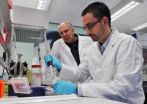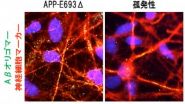(Press-News.org) If a genome is the blueprint for life, then the chief architects are tiny slices of genetic material that orchestrate how we are assembled and function, Yale School of Medicine researchers report Feb. 21 in the journal Developmental Cell.
The study pinpoints the molecular regulators of epigenetics – the process by which unchanging genes along our DNA are switched on and off at precisely right time and place.
"Our genome is like a landscape with lakes, mountains, and rivers, but it is not yet a community or a city full of buildings," said Haifan Lin, director of the Yale Stem Cell Center and senior author of the study. "What this system does is decide where and when to send out the masons, carpenters, and electricians to build a city or a community."
In the past 20 years, scientists have discovered that some proteins, called epigenetic factors, traverse the static genome and turn the genes on or off. The staggering number of potential combinations of active and inactive genes explains why a relatively small number of genes can carry out such a wide range of functions. But what guides these epigenetic factors to their target? The answer, the Yale team has found, is specialized RNAs called piRNAs.
In the latest study, the Yale team discovered that piRNAs guide epigenetic factors to numerous sites throughout the genome of the fruit fly Drosophila, where these switches work to turn genes on or off. The dramatic change in gene expression patterns found illustrated piRNAs key role in coordinating biological activity.
"This is the first major mechanism discovered that controls where epigenetic factors —the gene switches — are to be placed in the genome," Lin said.
Several types of cancers appeared to be triggered when the wrong kinds of piRNAs guide epigenetic factors to activate the wrong genes. Blocking the action of these piRNAs should become a new opportunity to treat cancers, Lin said.
###
Xiao A. Huang and Hang Yin of Yale are co-lead authors of the paper.
The research was funded by a National Institutes of Health Pioneer Award to Haifan Lin and a grant from Connecticut Stem Cell Research Fund to Lin and former Yale professor and co-author Michael Snyder, now of Stanford University.
Life's tiniest architects pinpointed by Yale researchers
2013-02-21
ELSE PRESS RELEASES FROM THIS DATE:
Research shows that coldness triggers northward flight in migrating monarch butterflies
2013-02-21
WORCESTER, MA – Each fall millions of monarch butterflies from across the eastern United States begin a southward migration in order to escape the frigid temperatures of their northern boundaries, traveling up to 2,000 miles to an overwintering site in a specific grove of fir trees in central Mexico. Surprisingly, a new study by scientists at the University of Massachusetts Medical School published in Current Biology, suggests that exposure to coldness found in the microenvironment of the monarch's overwintering site triggers their return north every spring. Without this ...
New study indicates avocado consumption may be associated with better diet quality
2013-02-21
IRVINE, Calif. (February 20, 2013) – New analysis of data from the National Health and Nutrition Examination Survey (NHANES) , a program of the Centers for Disease Control and Prevention (CDC), indicates that consuming avocados may be associated with better diet quality and nutrient intake level, lower intake of added sugars, lower body weight, BMI and waist circumferences, higher "good cholesterol" levels and lower metabolic syndrome risk. These results were published in the January 2013 issue of Nutrition Journal.
Specifically, the survey data (NHANES 2001-2008, ...
Early human burials varied widely but most were simple
2013-02-21
DENVER (Feb. 21, 2013) – A new study from the University of Colorado Denver shows that the earliest human burial practices in Eurasia varied widely, with some graves lavish and ornate while the vast majority were fairly plain.
"We don't know why some of these burials were so ornate, but what's striking is that they postdate the arrival of modern humans in Eurasia by almost 10,000 years," said Julien Riel-Salvatore, Ph.D., assistant professor of anthropology at CU Denver and lead author of the study. "When they appear around 30,000 years ago some are lavish but many aren't ...
Circadian clock linked to obesity, diabetes and heart attacks
2013-02-21
Disruption in the body's circadian rhythm can lead not only to obesity, but can also increase the risk of diabetes and heart disease.
That is the conclusion of the first study to show definitively that insulin activity is controlled by the body's circadian biological clock. The study, which was published on Feb. 21 in the journal Current Biology, helps explain why not only what you eat, but when you eat, matters.
The research was conducted by a team of Vanderbilt scientists directed by Professor of Biological Sciences Carl Johnson and Professors of Molecular Physiology ...
Bees attracted to contrasting colors when looking for nectar
2013-02-21
Flower colors that contrast with their background are more important to foraging bees than patterns of colored veins on pale flowers according to new research, by Heather Whitney from the University of Cambridge in the UK, and her colleagues. Their observation of how patterns of pigmentation on flower petals influence bumblebees' behavior suggests that color veins give clues to the location of the nectar. There is little to suggest, however, that bees have an innate preference for striped flowers. The work is published online in Springer's journal, Naturwissenschaften - ...
Scientists identify molecular system that could help develop treatments for Alzheimer's disease
2013-02-21
Scientists from the University of Southampton have identified the molecular system that contributes to the harmful inflammatory reaction in the brain during neurodegenerative diseases.
An important aspect of chronic neurodegenerative diseases, such as Alzheimer's, Parkinson's, Huntington's or prion disease, is the generation of an innate inflammatory reaction within the brain.
Results from the study open new avenues for the regulation of the inflammatory reaction and provide new insights into the understanding of the biology of microglial cells, which play a leading ...
The long shadow cast by childhood bullying on mental health in adulthood
2013-02-21
A new study shows that children who are exposed to bullying during childhood are at increased risk of psychiatric disorders in adulthood, regardless of whether they are victims or perpetrators.
Professor William E. Copeland of Duke University Medical Center and Professor Dieter Wolke of the University of Warwick led a team in examining whether bullying in childhood predicts psychiatric problems and suicidality in young adulthood. While some still view bullying as a harmless rite of passage, research shows that being a victim of bullying increases the risk of adverse outcomes ...
Early life stress may take early toll on heart function
2013-02-21
AUGUSTA, Ga. – Early life stress like that experienced by ill newborns appears to take an early toll of the heart, affecting its ability to relax and refill with oxygen-rich blood, researchers report.
Rat pups separated from their mothers a few hours each day, experienced a significant decrease in this basic heart function when – as life tends to do – an extra stressor was added to raise blood pressure, said Dr. Catalina Bazacliu, neonatologist at the Medical College of Georgia and Children's Hospital of Georgia at Georgia Regents University. Bazacliu worked under the ...
Modeling Alzheimer's disease using iPSCs
2013-02-21
Kyoto, Japan – Working with a group from Nagasaki University, a research group at the Center for iPS Cell Research and Application (CiRA) at Japan's Kyoto University has announced in the Feb. 21 online publication of Cell Stem Cell has successfully modeled Alzheimer's disease (AD) using both familial and sporadic patient-derived induced pluripotent stem cells (iPSCs), and revealed stress phenotypes and differential drug responsiveness associated with intracellular amyloid beta oligomers in AD neurons and astrocytes.
In a study published online in Cell Stem Cell, Associate ...
Schizophrenia genes increase chance of IQ loss
2013-02-21
People who are at greater genetic risk of schizophrenia are more likely to see a fall in IQ as they age, even if they do not develop the condition.
Scientists at the University of
Edinburgh say the findings could lead to new research into how different genes for schizophrenia affect brain function over time. They also show that genes associated with schizophrenia influence people in other important ways besides causing the illness itself.
The researchers used the latest genetic analysis techniques to reach their conclusion on how thinking skills change with age.
They ...



